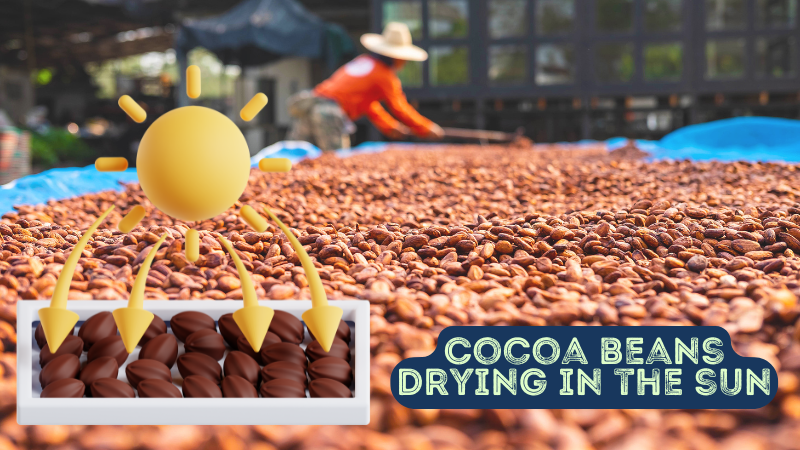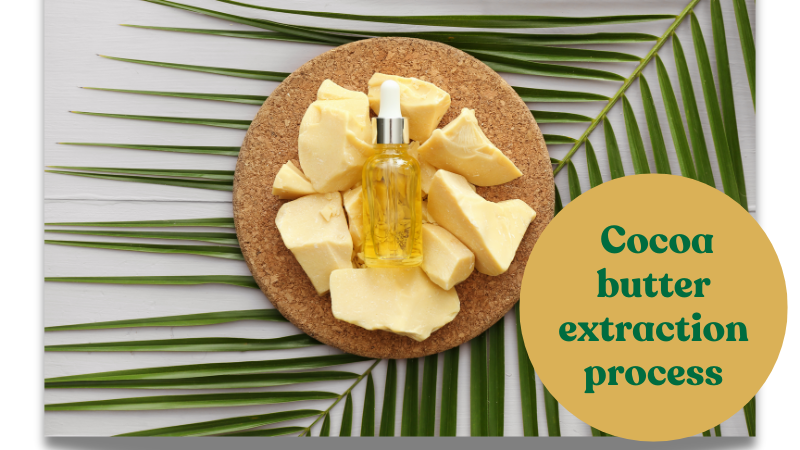In What Forms is Cocoa Exported in 2025: Everything You Need to Know
Hey there! Have you ever wondered how cocoa travels from tropical farms to chocolatiers and consumers? Cocoa is the raw material for chocolate. It’s also in many other products. But did you know that cocoa is exported in different forms? From raw beans to cocoa butter, the global cocoa market is as varied as it is fascinating.
Here’s a fun fact to start: the global cocoa market is worth over $100 billion and growing every year! Ready to dive into how and in what forms cocoa is exported? Let’s explore all the details below.
Introduction
Have you ever wondered how cocoa, the key ingredient in chocolate, goes from tropical farms to chocolatiers and consumers worldwide? Cocoa is not just the key ingredient in chocolate but is also used in many other food products, cosmetics, and medicines. This crop grows best in certain climates. It mainly comes from tropical areas, so its trade is key to the global agricultural market.
However, cocoa does not simply travel as one uniform product. Instead, it is exported in a variety of forms, each catering to different markets and industries. From raw beans to cocoa butter, cocoa powder, and cocoa liquor, each form has a specific purpose. To fully understand cocoa, it’s important to know how it’s processed, exported, and used in different industries. Let’s explore cocoa exportation. We’ll look at its various forms, how it’s processed, and the challenges and opportunities in the cocoa trade.
What Is Cocoa and Why Is Its Export Important?
Cocoa comes from the seeds of the cacao tree, Theobroma cacao. This tree grows in the deep tropical rainforests of Central and South America. Now, it’s also grown in many equatorial countries. The top producers are Ivory Coast, Ghana, Ecuador, Colombia, and Brazil. The seeds, known as cocoa beans, are harvested from pods that grow on the cacao tree. After harvesting, these beans ferment. Then, they are dried and prepared for export.
The global demand for cocoa, particularly for chocolate products, has led to a booming export market. Chocolate is a beloved treat around the world, and it’s in demand year-round. Cocoa plays an important role in the global economy. It benefits farmers who grow it and manufacturers who turn it into products that people enjoy. In fact, more than 5 million metric tonnes of cocoa beans are produced annually, with the majority of them destined for export.
Cocoa exports help the economies of growing countries. They provide jobs for millions of small farmers. Cocoa isn’t just a way to make money. It’s a versatile product. It exports in many forms, and each form serves a different purpose in various industries. Let’s now explore the main forms in which cocoa is exported.

Did you know? Raw cocoa beans are high in antioxidants. They have a bitter taste. This makes them a prized commodity in speciality chocolate-making.

In What Forms is Cocoa Exported?
Cocoa is mostly exported in these forms:
- Raw cocoa beans
- Cocoa paste (or cocoa liquor)
- Cocoa butter
- Cocoa powder
- Cocoa nibs
- Cocoa mass
Each of these products undergoes a different level of processing, which determines its use in the final chocolate or food product.
1. Raw Cocoa Beans
The most basic and widely exported form of cocoa is the raw cocoa bean. After harvesting, the beans are extracted from the cocoa pods, fermented for several days, then dried and packaged for export.
Advantages of Raw Cocoa Beans:
- Flexibility: You can process raw cocoa beans into many products, like cocoa powder, cocoa butter, and chocolate. This gives buyers flexibility in how they use the beans.
- Raw cocoa beans need little processing. This keeps production and export costs low, unlike refined products.
- Antioxidant Content: Raw cocoa beans are full of flavonoids and other antioxidants. These are very valued in the health food industry.
Example: Major exporters of raw cocoa beans include Côte d’Ivoire (Ivory Coast) and Ghana, which together supply about 60% of the world’s cocoa beans. These beans are then sent to various countries for processing into chocolate or other products.
2. Cocoa Paste or Cocoa Liquor
Cocoa paste, also referred to as cocoa liquor, is produced by grinding roasted cocoa beans. First, the beans are fermented, then roasted, and cracked. After that, they are ground into a thick liquid with cocoa solids and cocoa butter. Despite the name “liquor,” there is no alcohol in this product.
Advantages of Cocoa Paste:
- Base for Chocolate Production: Cocoa paste is the essential base for making chocolate. It is used to create dark, milk, and white chocolate, as well as cocoa-based products.
- High Cocoa Concentration: Cocoa paste keeps many natural properties of cocoa beans. It also has a lot of antioxidants.
- Versatility: Cocoa paste can be further processed into cocoa butter and cocoa powder, or it can be used as-is for chocolate-making.
Nestlé, Mars, and Hershey are major chocolate makers. They import cocoa paste, a key ingredient for their chocolate products.
3. Cocoa Butter
Cocoa butter is one of the most valuable products derived from cocoa beans. It is a pale yellow vegetable fat extracted from cocoa paste. It has a smooth texture and is widely used in food products as well as in the cosmetics industry.
Advantages of Cocoa Butter:
- Long Shelf Life: Cocoa butter has a long shelf life, making it suitable for long-distance export. Its stability helps ensure the quality of products made with it.
- Versatility: Cocoa butter is not just used in chocolate; it is a common ingredient in beauty products such as lotions, soaps, and lip balms. In fact, the cosmetic industry is a major consumer of cocoa butter.
- Cocoa butter gives chocolate its smooth, melt-in-your-mouth feel.
The United States imports a lot of cocoa butter for beauty and skincare products. Brands like The Body Shop and Lush rely on it for their items. Chocolate makers such as Lindt and Godiva use cocoa butter for their high-quality treats.
4. Cocoa Powder
Cocoa powder is the dry, defatted form of cocoa, produced by removing cocoa butter from cocoa paste. It is widely used in baking, beverages (like hot cocoa), and other food products.
Advantages of Cocoa Powder:
- Low Fat Content: After the fat has been removed, cocoa powder has a low-fat content, making it ideal for use in low-fat recipes.
- Ease of Transport: Cocoa powder is lightweight and easy to store and transport, making it cost-effective to export.
- Two Types: Cocoa powder comes in two main varieties. Natural cocoa powder has a more acidic and bitter taste. Dutch-processed cocoa powder has a milder flavor. This is due to an alkalization process.
Cadbury, Hershey, and Ghirardelli use cocoa powder. They make hot chocolate mixes and baking ingredients.
5. Cocoa Nibs
Cocoa nibs are small pieces of crushed cocoa beans that have been fermented, dried, roasted, and separated from their husks. They are often used in artisanal chocolate-making or as toppings for desserts, smoothies, and health foods.
Advantages of Cocoa Nibs:
- Superfood: Cocoa nibs are a superfood because they are high in antioxidants. These can help support heart health and reduce inflammation.
- Crunchy Texture: Cocoa nibs add a satisfying crunch and an intense chocolate flavor to recipes.
- Cocoa nibs are less processed than other cocoa products. This makes them a favorite for health-conscious consumers.
Health food brands, such as Navitas Organics and Vital Proteins, offer cocoa nibs. You can find them sold alone or mixed in their superfood blends. These nibs are popular in smoothies, granola bars, and energy snacks.
6. Cocoa Mass
Cocoa mass, also called unsweetened cocoa, is a rich cocoa form. It includes both cocoa solids and cocoa butter, but has no added sugar. It is commonly used in the manufacturing of dark chocolates and can also be used to create cocoa powder or cocoa butter.
Advantages of Cocoa Mass:
- Pure Cocoa Flavor: Cocoa mass is pure cocoa with no additives or sugars, giving it an intense, bitter chocolate flavor.
- Versatility: It forms the base for creating both bitter and sweet chocolate, based on the final product you want.
- No Additives: Cocoa mass has no added sugar or artificial ingredients. This is great for chocolate makers who want to control sweetness levels.
High-end chocolate makers, such as Valrhona and Scharffen Berger, use cocoa mass for their artisan dark chocolate. Cocoa mass is also a key ingredient in various premium chocolates produced in Switzerland, Belgium, and France.
How Are These Different Forms Processed?
The processing of cocoa depends on the form in which it is being produced. Here’s a breakdown of the process for some of the main cocoa products:
- Cocoa Beans: After harvesting, the cocoa beans are fermented for several days to develop their flavor. They are then dried, packaged, and shipped.
- Cocoa Paste/Liquor: The beans are roasted, cracked, and ground into a thick liquid.
- Cocoa Butter: The fat is extracted from the cocoa liquor through a pressing process.
- Cocoa Powder: The cocoa butter is removed from the cocoa liquor, and the remaining solids are ground into fine powder.
- Cocoa Nibs: The roasted beans are cracked and the nibs are separated from the husks.
- Cocoa Mass: The cocoa solids and cocoa butter are mixed together to form a pure, concentrated form of cocoa.
Global Demand for Cocoa
Cocoa is crucial for making chocolate. The demand for chocolate and cocoa products is growing worldwide. Industry reports say the global chocolate market will grow by 4.5% each year from 2021 to 2026. This growth is likely to boost cocoa demand.Challenges in Cocoa Exportation
Despite its growing demand, cocoa exportation faces several challenges:
Supply Chain Challenges: Cocoa supply chains often struggle with disruptions. These come from political instability, shipping delays, and poor infrastructure. This is especially true in remote cocoa-producing areas.
Climate Change: Cocoa trees are sensitive to changes in temperature and rainfall. Climate change poses a significant threat to cocoa yields, affecting both the quantity and quality of production.
Fair Trade Issues: Many cocoa farmers in developing countries face low wages and poor working conditions. Fair Trade initiatives aim to help farmers. They ensure fair pay and improve working conditions.
FAQs
The most common cocoa export is raw cocoa beans. Chocolate manufacturers worldwide process them.
Cocoa butter is highly prized because of its versatility. It’s used in both the food and cosmetics industries, and it has a long shelf life.
Cocoa powder is the dry, defatted form left after extracting cocoa butter. Cocoa liquor is a liquid paste that contains cocoa solids and fats.
Cocoa plants need a specific temperature and rainfall. So, climate change can hurt cocoa yields and quality.
Cocoa nibs are often used in artisanal chocolate and health foods. They provide a crunchy texture and are rich in antioxidants.
Conclusion
Cocoa is a versatile and valuable commodity that is exported in several different forms, each catering to
distinct industries and markets. From raw beans to cocoa butter, cocoa powder, and nibs, the global cocoa trade is an essential part of the food and cosmetics industries. This valuable crop faces challenges. Climate change impacts its growth. Also, fair trade practices are needed so farmers get fair pay for their work. Knowing the different types of cocoa and their processing shows why this product matters in the global market. It also highlights its ongoing role in economies worldwide.
Whether you enjoy a chocolate bar or a cup of hot cocoa, the next time you indulge, take a moment to appreciate the journey that cocoa takes from farm to table.
Want to learn more about cocoa products? Let me know in the comments below or share your favourite cocoa-based recipes!






